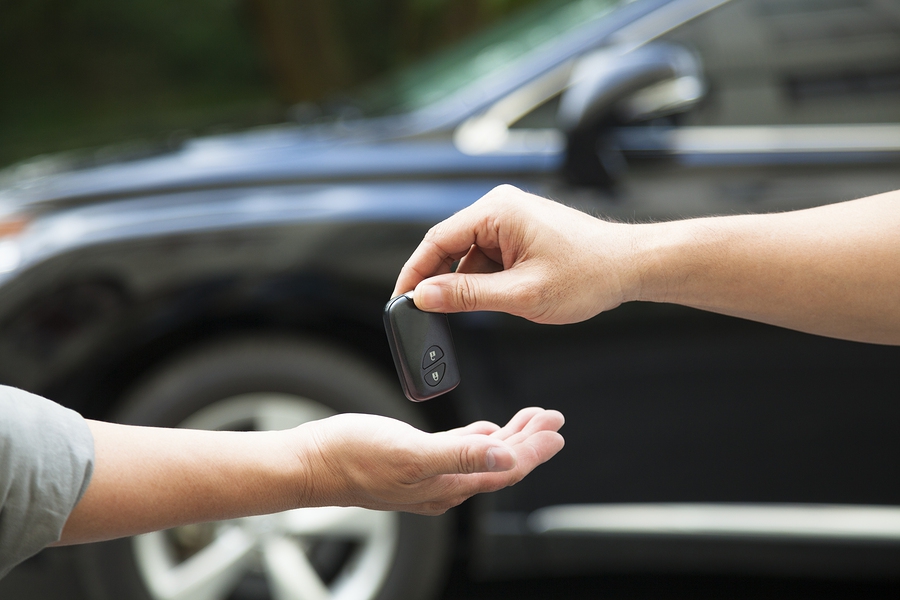The Focus - Our Tax E-Newsletter |
2017 Tax Reform - Business Autos

The Tax Cuts and Jobs Act has changed the tax rules for business autos including depreciation, lease deductions, trade-ins of autos, write-offs for heavy SUVs, and deductions for employee-provided autos.
Regular Depreciation – Luxury Auto Cap
The tax law limits the amount of depreciation that can be claimed. Under the Tax Cuts and Jobs Act passenger automobiles placed in service after Dec. 31, 2017 (in tax years ending after that date) the maximum amount of regular allowable depreciation has been increased substantially. The regular allowable depreciation amount is the maximum available if the taxpayer either elects out of additional first-year depreciation deduction for 5-year MACRS property, or is not eligible to claim bonus depreciation.
2018 calendar year annual regular allowable depreciation deductions for passenger autos under the new law are limited as follows:
- First (placed-in-service) year, lesser of 20% or $10,000.
- Second year, 32% or $16,000.
- Third year, 19.2% or $9,600.
- Fourth year, 11.52% or $5,760.
- Fifth year, 11.52% or $5,760.
- Sixth year, 5.76% or $5,760.
Heavy SUVs – Gross Vehicle Weight (GVW) over 6,000 pounds are exempt from the luxury auto dollar caps.
Bonus Depreciation – Luxury Auto Cap
If a taxpayer claims 100% bonus depreciation in calendar year 2018, the greatest allowable depreciation deduction is:
- $18,000 for the first year,
- $16,000 for the second year,
- $9,600 for the third year, and
- $5,760 for each later taxable year in the recovery period.
An increase in the first-year depreciation dollar cap applies to autos (including light duty trucks and vans) that are subject to the luxury auto dollar limits and the bonus first-year depreciation allowance. The $8,000 increase under the pre-Tax Cuts and Jobs Act remains the same under the new law through 2026. Using bonus depreciation the regular luxury auto first year dollar cap is $18,000 ($8,000 bonus + $10,000). Currently, 100% bonus depreciation may cause some difficulties with deprecation after the first year. Further IRS guidance is required if using the 100% bonus depreciation due to the $8,000 bonus cap.
SUV’s and Section 179
SUV’s with a GVW above 6,000 lbs. (but not above 14,000 lbs.), are limited to a $25,000 §179 deduction. Vehicles that are above 6,000 lbs. but not more than 14,000 lbs. are not subject to the §179 $25,000 limit if any of the following exceptions apply:
- The vehicle is designed to have a seating capacity of more than nine persons behind the driver's seat,
- The vehicle is equipped with a cargo area of at least 6 feet in length that is considered an open area or is designed for use as an open area, but is enclosed by a cap and is not readily accessible directly from the passenger compartment or,
- The vehicle has an integral enclosure, fully enclosing the driver compartment and load-carrying device, but does not have seating behind the driver's seat, and has no body section protruding more than 30 inches ahead of the leading edge of the windshield.
No depreciation or Sec. 179 limits apply to SUVs with gross vehicle weights over 14,000 pounds, but very few SUVs are that large.
All of be above deductions will be further limited by the business use percentage of the vehicle in question. Furthermore, if the business use of a vehicle is below 50%, the accelerated method is not permitted.
If you are contemplating the purchase of a larger vehicle, one way to entirely avoid potential headaches associated with 100% first-year bonus depreciation rules and the luxury auto rules is to buy a heavy SUV—one with a loaded GVW rating of more than 6,000 pounds.
Leased Business Autos
Another way around the depreciation and/or expensing limitation is to lease business autos instead of purchasing them. The deductible amount is the business use percent of the lease cost, net of a usually modest lease income inclusion amount from the IRS tables.
A taxpayer that leases a business auto may deduct the part of the lease payment representing the business or investment use. If the business or investment use is 100%, the full lease cost is deductible. To prevent lessees from avoiding the effect of the luxury auto limits, a certain amount must be included in income (called the income inclusion amount) during each year of the lease to partially offset the lease deduction if the vehicle's fair market value (FMV) exceeds certain dollar limits (over $50,000 in 2018). The income inclusion amount varies with the initial FMV of the leased auto and the year of the lease.
Trade-Ins of Business Autos
A taxpayer may acquire a business auto by trading in another business auto and paying cash. Before the Tax Cuts and Jobs Act, the trade-in yielded neither gain nor loss since the transaction was treated as a like-kind exchange. This treatment is no longer available for autos after 2017. Starting in 2018 the taxpayer will recognize a gain or loss on the auto traded-in (its trade-in value minus the remaining depreciable basis).
Unreimbursed Business Auto Expenses of Employees
Although many companies supply autos to employees who must drive for employment-related business reasons, others require workers to use their own autos. Before 2018 workers who were not reimbursed for out of pocket auto expenses could claim them on Schedule A, Form 1040, as miscellaneous itemized deductions. These used to be deductible to the extent such deductions cumulatively exceeded 2% of their adjusted gross income. Under the Tax Cuts and Jobs Act, effective for tax years beginning after 2017 and before 2026, miscellaneous itemized deductions (including unreimbursed employee business expenses) are disallowed.
The professionals at Dermody, Burke & Brown are available to assist you with the tax impact of purchasing or leasing a vehicle. Please contact us at 315.471.9171.
The information reflected in this article was current at the time of publication. This information will not be modified or updated for any subsequent tax law changes, if any.
